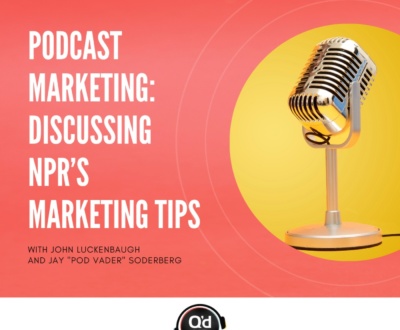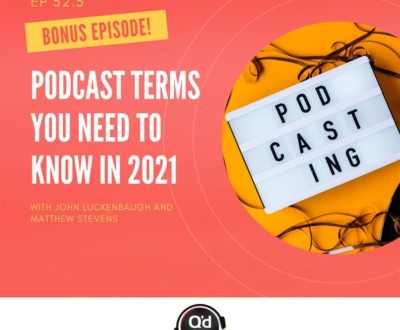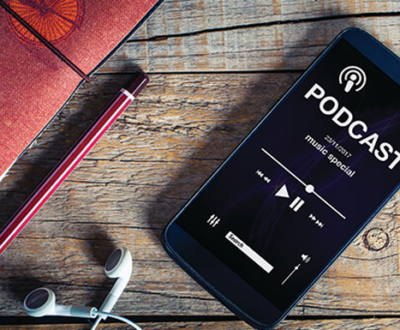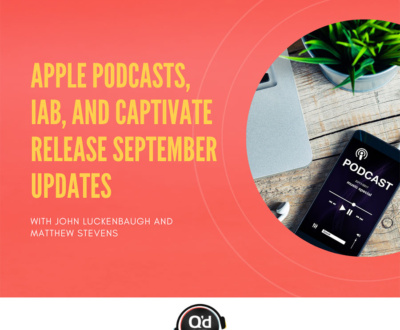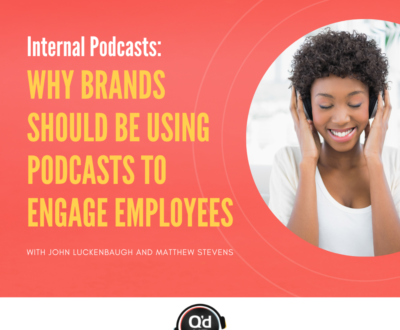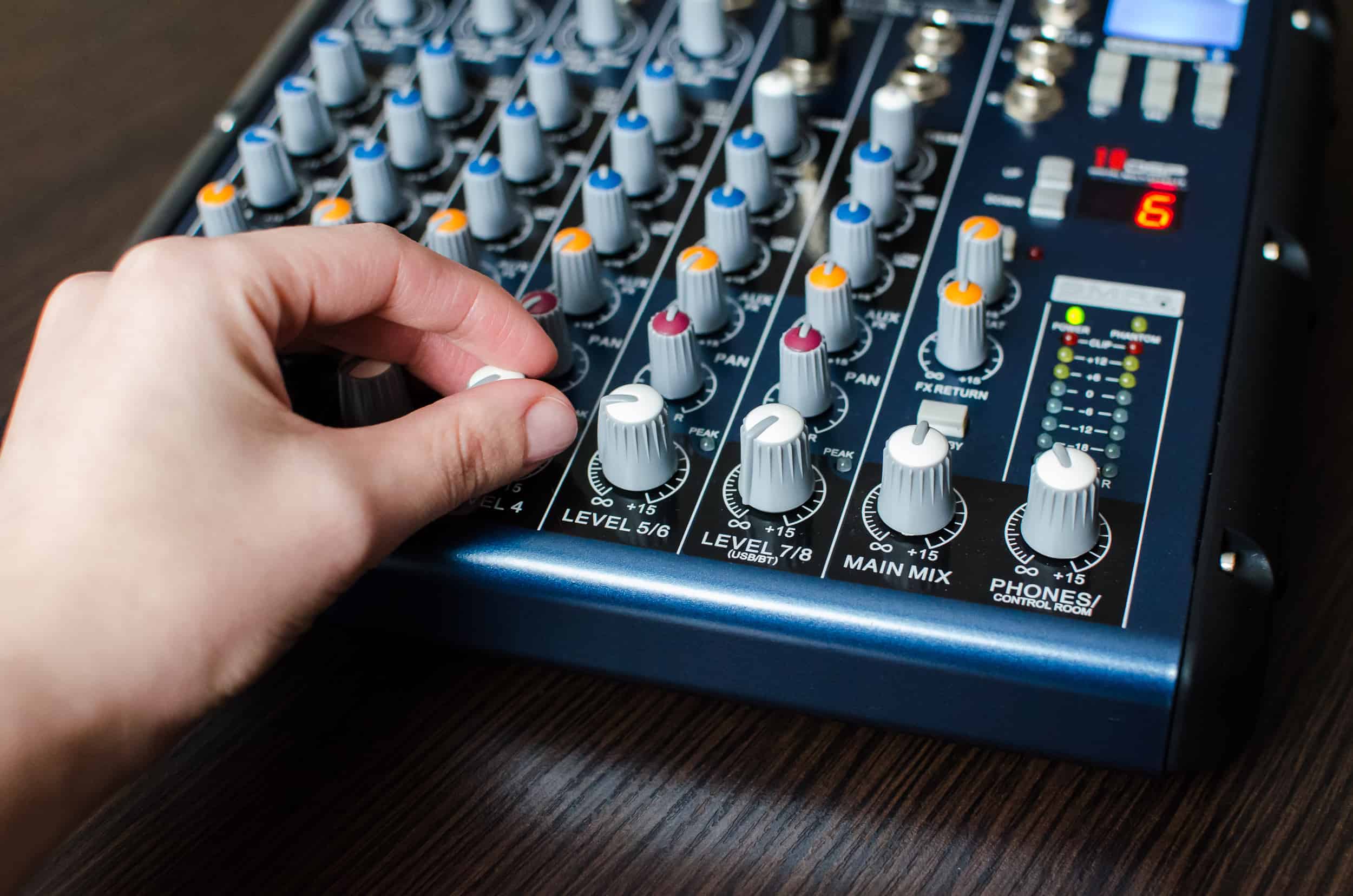
Looking to create a winning podcast, but not sure where to start? Don’t worry – even the most seasoned podcast producers make mistakes! Here are five basic podcast tips and principles that will take your podcast from zero listeners (mom and dad don’t count) to hundreds in no time.
1.) Sound Quality
Good sound quality is essential. You can think of the clean audio recording as the foundation or “secret sauce” for a great podcast. It’s all about capturing you, your voice, and your content clearly and accurately. The right software can help reduce static and background noise, so you stay the real star.
Audio Levels
Audio levels refer to the loudness level of your content. Of course, not everything will have the same loudness. If you have a naturally louder or softer voice, a simple microphone adjustment can even out your vocals. In audio mixing, it’s common to use a technique called peak normalizing, which looks for audio peaks and adjusts the loudness of the sound file accordingly.
Low-quality Audio Equipment
Some adjustments can be changed during audio editing (next step), but starting with high-quality audio equipment can reduce the number of adjustments that need to be made later. We know, we know, it’s expensive. There are plenty of quality, low-budget tools out there, but investing in yourself and your product is essential to running a business.
In addition to equipment, you will want to work on recording in a comfortable, sound-conscious environment where you can relax and focus on getting your message across. Too many distractions can increase the level of background noise. There’s nothing worse than putting together a great podcast production, only to discover that there were people talking in the background the whole time!
2.) Post-Production/Audio Editing
Post-production is one of the most fun parts of creating a podcast, where you can add extra bells and whistles like an introduction or music production (music logo, music bed, and stingers).
Enlisting the right audio production services can help the post-production shine, and boost your brand. The important thing is to not rush the post-production process. You want to end up with a really polished final product.
Adding Intros, Music, Sound FX, and More
Audio mixing refers to the process of combining different sounds – whether it’s through adjusting volume or frequency. The editing stage is the moment to polish your podcast. An intro is pretty essential: for new listeners, this will be their first taste of what you have to offer. Music and sound FX can engage listeners on an emotional level. It all has to do with the story you want to tell.
Don’t Over-Produce
It can be very tempting to add a lot of different sounds to make your podcast flashy. But add too much, and your listeners might become distracted. Keep the sound and music production simple, and let your product or service be the real draw.

3.) Find Your Core Listener
Finding your core listener is a must for building a loyal audience base. If you’re creating a personal or small business podcast, don’t worry about trying to gain a huge crowd in the beginning. Attracting an audience takes time.
Find Your Niche
Start small: identify the topic you want to create a podcast about and go from there. For some individuals or business owners, this might be easy – a nail salon might make a podcast about the latest trends in nail art, for example. The best part about finding your niche? You just might have a built-in audience.
Don’t Choose Too Broad of Topics
Narrowing down what topics you’re going to cover in each podcast can keep the show on track. Some podcast hosts create a schedule of what they’re going to discuss in each episode, which has the added benefit of encouraging listener engagement – loyal listeners will want to tune in next time to hear more of your expertise.
4.) CTA – What is it?
A Call-To-Action, or CTA, is a marketing term that refers to prompts designed to encourage an immediate sale or other response. Hooks like “apply today” or “call now” are CTAs.
And Why is it Important?
Without a CTA, you’re missing a crucial step between your audio production and audience engagement. Make your CTA catchy – just a few words will do – and tailored to the outcome you want. For instance, are you looking for people to visit your showroom to learn more, or is there an audiobook you want listeners to download?
5.) Submit to a Podcasting Directory
Getting listed in a podcast directory is fairly simple. It usually involves sending an email to the managers of the directory. Make sure to present yourself – and your podcast production – as professionally as possible when communicating with these directories.
People can’t listen if they don’t know you exist!
This is a big one. You might have a great podcast with all the bells and whistles, but if people don’t know you exist, they won’t be listening to your awesome content. Some of the biggest podcast directories are iHeartRadio, iTunes, and Stitcher, and getting listed on one of these will help grow your listener base. Odds are, however, that you’re producing a podcast with a niche. It might be worth investigating smaller directories that cater to your unique field.
Sharing on Social
Sharing on social media is a tried-and-true tactic for attracting inclining ears. You can choose whether you want to share whole episodes, or just a few teasers to lure people in. While Facebook is still the biggest player in the social media world, don’t overlook Twitter or Instagram. It’s worth it to have a presence on as many platforms as possible – you never know where you might grab a new listener.
Contact Q’d Up to start your own podcast series!
Request a free quote
We offer high-quality production, distribution, and marketing for podcasts and audiobooks. Contact us today for a free, no obligation quote





